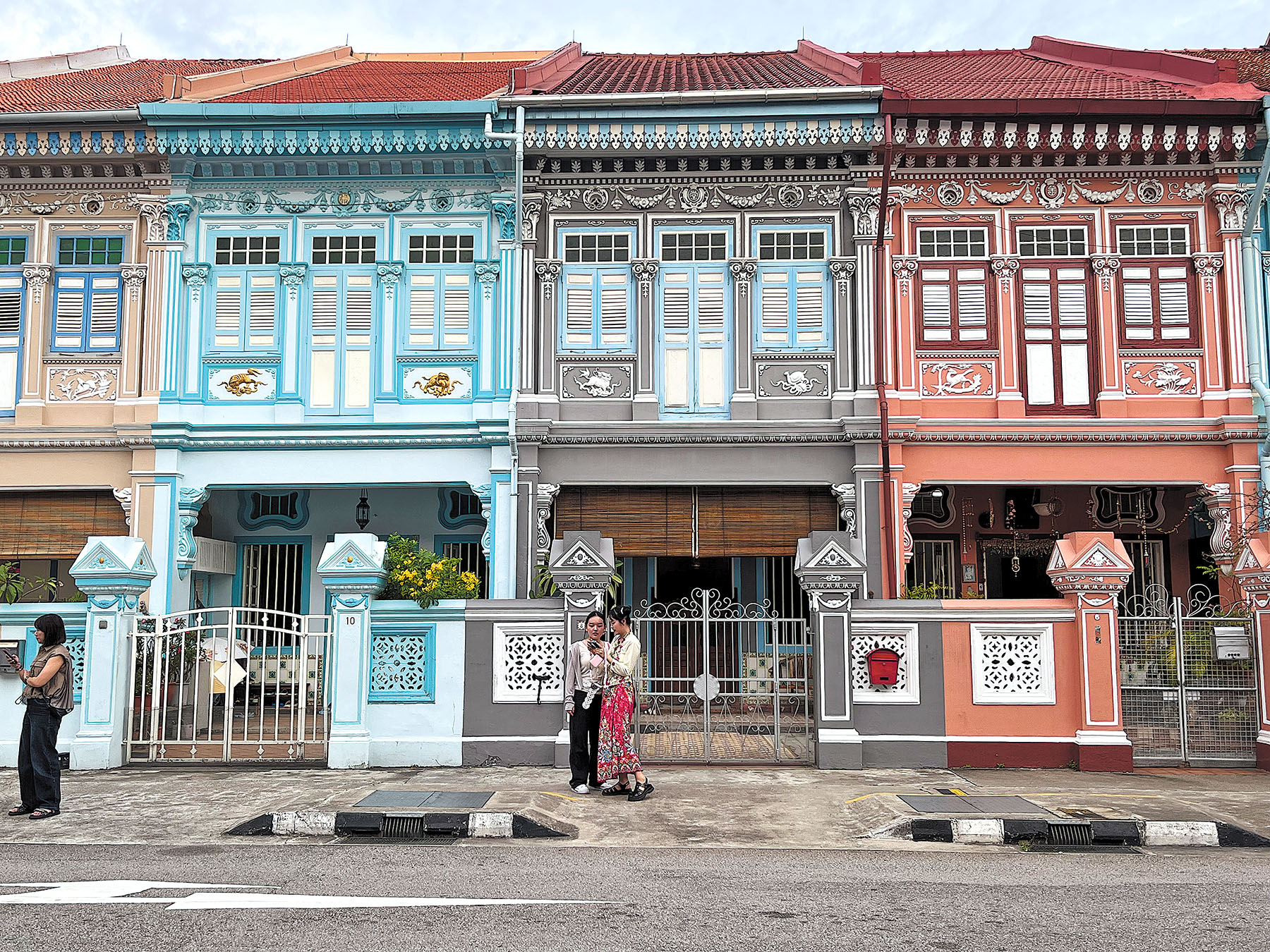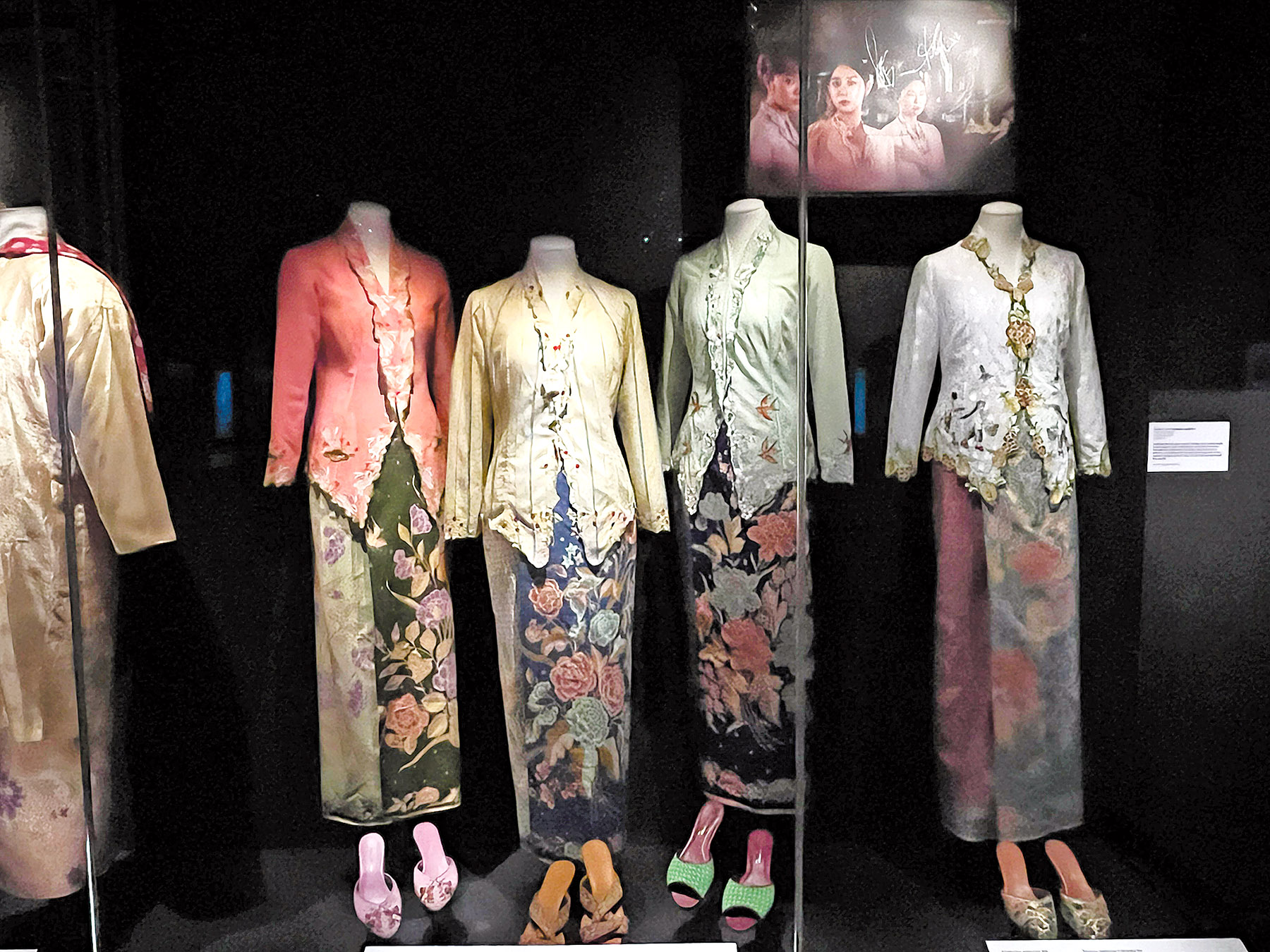Centuries-old multiethnic culture of Singapore's first 'crazy rich Asians' experiences revival

Editor's note: In this weekly feature China Daily gives voice to Asia and its people. The stories presented come mainly from the Asia News Network (ANN), of which China Daily is among its 20 leading titles.
Dressed in sarong kebayas, or traditional Malay wear, female tourists sashayed down the hallway of the Peranakan Mansion in Singapore, as they looked for backdrops to pose for photographs.
With ornately carved cabinets dating at least 100 years old as a backdrop, it was as though the tourists were transported back to the 1900s in Singapore, where Peranakan culture, a unique fusion of Chinese, Malay and other indigenous cultures, was at its peak.
Elaine Ng, co-founder of the privately-owned Peranakan Mansion in a historically Peranakan neighborhood in Singapore's east, said this was one of the more popular tourist activities at the museum.
READ MORE: Malaysia seeks cooperation, exchange on shared practices
"Just like those tourists who go to Japan and take pictures in kimonos, or those who go to (South) Korea and take pictures in hanboks, tourists now like to come to Singapore and take photos in sarong kebayas," Ng said.
And just like tourists in other countries, an increasing number of tourists are looking for more unique cultural experiences in Singapore to make their visit more interesting and worthwhile.
"From the furniture to the clothes and practices, the Peranakans lived lives of luxury. They are like Singapore's original 'crazy rich Asians'," Ng said, referring to the popular film and explaining the allure of Peranakan culture to tourists and Singaporeans alike.
Peranakan, a Malay word meaning "born of", refers to someone who is locally born but has heritage from somewhere else, according to the website of Singapore's National Heritage Board.

Ng said that the Peranakans are also the ethnic group where the cultural elements of Singapore's main ethnic groups (Chinese, Indian and Malay) are absorbed into one culture.
The origins of the Peranakans date back to the 15th century, when the early Chinese traders married local Malay women in Southeast Asia, and their offspring being known as Peranakan Chinese.
While Peranakan Chinese make up the majority of Peranakans in Singapore, other Peranakans include the Arab Peranakans and the Peranakan Indians.
For a few hundred years, Peranakan culture flourished in Singapore and Malaysia. The Peranakans in their heyday lived in large mansions filled with intricately carved rosewood furniture from China. Large family altars were the centerpieces of the front rooms of Peranakan houses, where it stretched from floor to ceiling, showcasing their wealth and status in society. Weddings were 12-day affairs, where elaborate rituals were performed and no expense was spared.
The intermarriages brought about a rich melding of cultures and traditions. The men, known as baba, were rich traders able to afford the beautiful furniture carved with exquisite detail by carpenters in China. The women, known as nyonya, were the head of the household and cooked food of mostly Malay origin, with its aromatic spices and spicy coconut-based broths.
Ng said the 1920s were the golden years for the Peranakans in Singapore when business boomed for the community. But soon after, the Great Depression and World War II came and the Peranakans lost their wealth during the war.
With the loss in ability to maintain their extravagant lifestyles, many of the Peranakan Chinese integrated with the wider Chinese community, and the culture flew under the radar for the next few decades.

Media influence
But Peranakan culture experienced a revival in the last 20 years, as popular television shows and films such as The Little Nyonya and Crazy Rich Asians helped to put Peranakan culture back in the spotlight.
At the same time, Peranakans in Singapore also wanted to explore more about their heritage, hence sparking a renewed interest in the culture.
Coincidentally, China's 2020 remake of The Little Nyonya, which was broadcast on China Central Television and the streaming platform iQIYI, introduced Peranakan culture to an even bigger Chinese audience, and this also helped propel visitor numbers at the Peranakan Mansion. Ng added that the museum has seen an "exponential increase" in visitors in the last three years.
Ng said about 40 to 50 percent of the museum's visitors are Chinese tourists, and European tourists make up the second-largest group of visitors at around 30 to 40 percent.
Part of the bump in Chinese tourist numbers at the Peranakan Mansion can also be attributed to social media. The museum is one of the stops on social media influencer tours organized by the Singapore Tourism Board, as part of its aim to promote Peranakan culture as a unique experience for tourists.
"The response from the (Chinese) influencers are fantastic. They bring their families along, and they have camera assistants to help them. Some individuals also come on their own (not with the Singapore Tourism Board)," Ng said.
"Xiaohongshu (RedNote) and Dianping have also helped in the increase in visitor numbers. More and more Chinese tourists make it a point in their itinerary to daka (a phenomenon of posting photos or videos on social media at popular sites), as they want to experience Peranakan culture."
At the Peranakan Museum, a public museum under the care of the National Heritage Board, international visitors make up about 45 percent of its total visitor numbers each year, said Noorashikin Zulkifli, deputy director of curatorial, education and interpretation and principal curator of Islamic art and Peranakan at the Peranakan Museum.
As there is demand for more diverse and unique cultural experiences, the public museum has been working with several cultural associations to organize events that create immersive experiences.
"One way we've been able to bring new visitors to the museum is through the recent edition of Armenian Street Party, where we hosted a weekend of interactive and engaging activities," Zulkifli said.
Apart from being drawn to the vast collection of lacquered rosewood furniture, intricately beaded accessories and fine dining ware on display at the museums, tourists also attend bespoke cultural talks, nyonya tea sampling and family-based engagement such as tile painting, so as to have a richer Peranakan cultural experience.
"European tourists and groups of lecturers, teachers and students want a deep dive into the culture, and that will be a much longer program," Ng said. "And visitors from China are interested in cultural talks and posing for photos in the kebaya."
While Peranakan culture is currently enjoying a renaissance of sorts, Ng and her museum team are among those that are helping to transform Peranakan culture, so that it will evolve and adapt to the present day and beyond.
"During the Singapore Art Week in January, we held workshops where we reimagined the look of the sarong kebaya — how a traditional piece like a kebaya can be adapted into contemporary wear," Ng said.
ALSO READ: Making the unfamiliar accessible to all
"We also plan to hold more workshops specialized in Peranakan art and culture. We see this as our contribution and the way forward in keeping Peranakan heritage alive."
Zulkifli said the Peranakan Museum hopes to be able to showcase more lesser-known aspects of Peranakan art and culture to even more audiences in the years to come.
"Peranakan culture can be an inspiration for an increasingly globalized society where we not only champion cross-cultural connections that can give rise to new expressions, aesthetics and practices, but also embrace the complexities that mixing cultures can bring," she said.
With the spin-off of The Little Nyonya being aired in March and later this year in China, Ng said she and her team are anticipating even more Chinese tourists to step through their doors once Emerald Hill — The Little Nyonya Story is aired in China.
"People are drawn to the grace and mystique behind the Peranakan lifestyle," Ng said. "Chinese tourists recognize it now as a 'must-see' while they are in Singapore."
The writer is a freelance journalist for China Daily.


